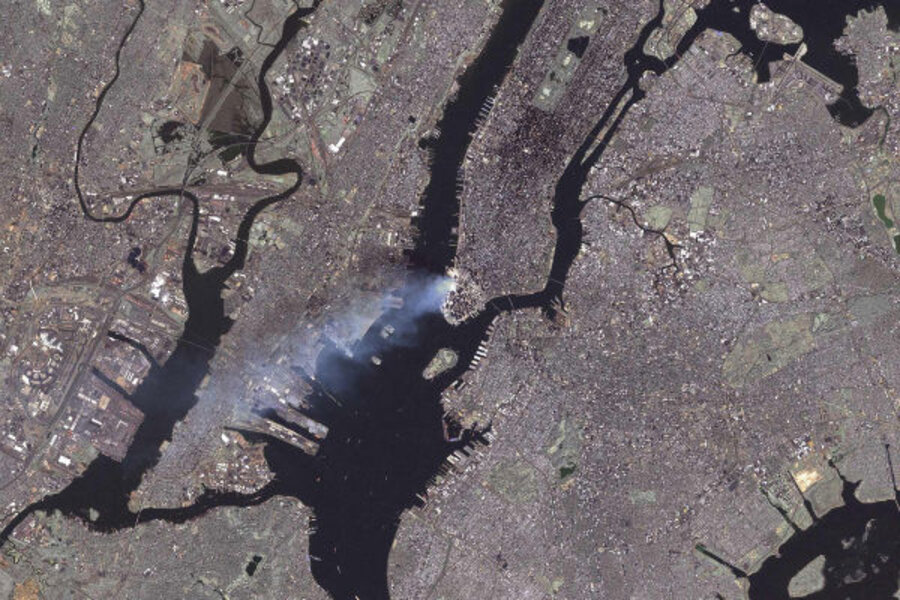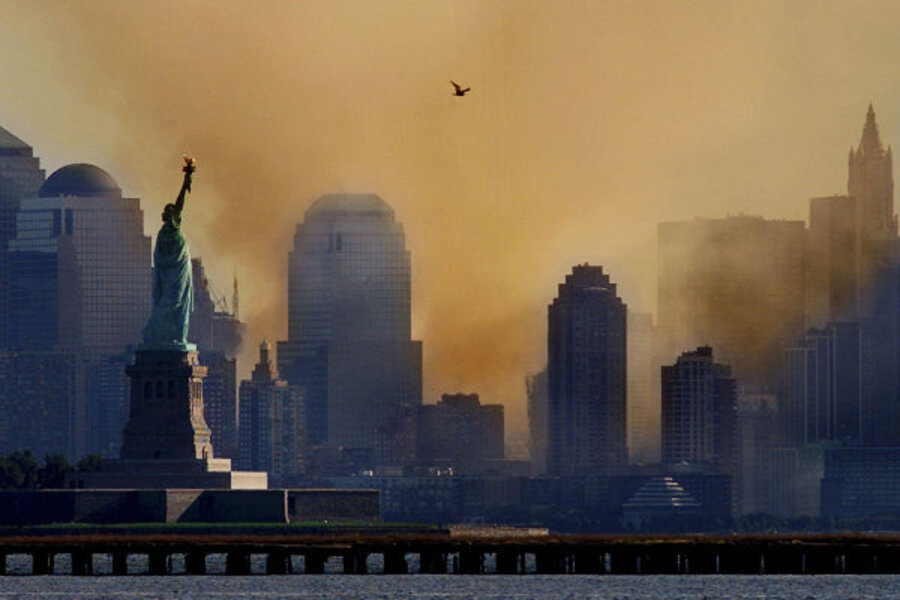Terrorist attacks against the World Trade Center and Pentagon challenge aspects of America's core identity
By Peter Grier, Staff writer of The Christian Science Monitor / September 12, 2001
WASHINGTON
On a Tuesday like any other, with fall coming on and the kids settling into school, the United States of America was struck by a series of terror blows so searing they could change the nation's sense of itself as profoundly as did Pearl Harbor or the worst days of the Vietnam War.
The US is used to feeling invulnerable. Bombs, smoke, and a banshee chorus of rescue vehicles were for other, weaker, less prosperous places.
Now the very idea of America, as expressed in its symbolic buildings, has been successfully attacked. Going forward, one overarching debate will likely involve how that idea - of openness, of freedom of movement, of confidence in itself - may change.






